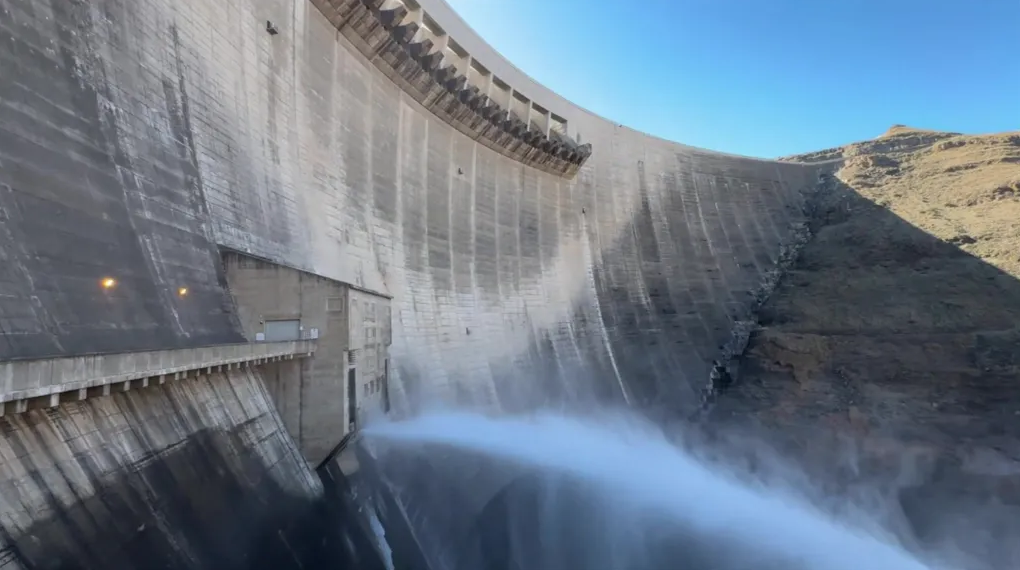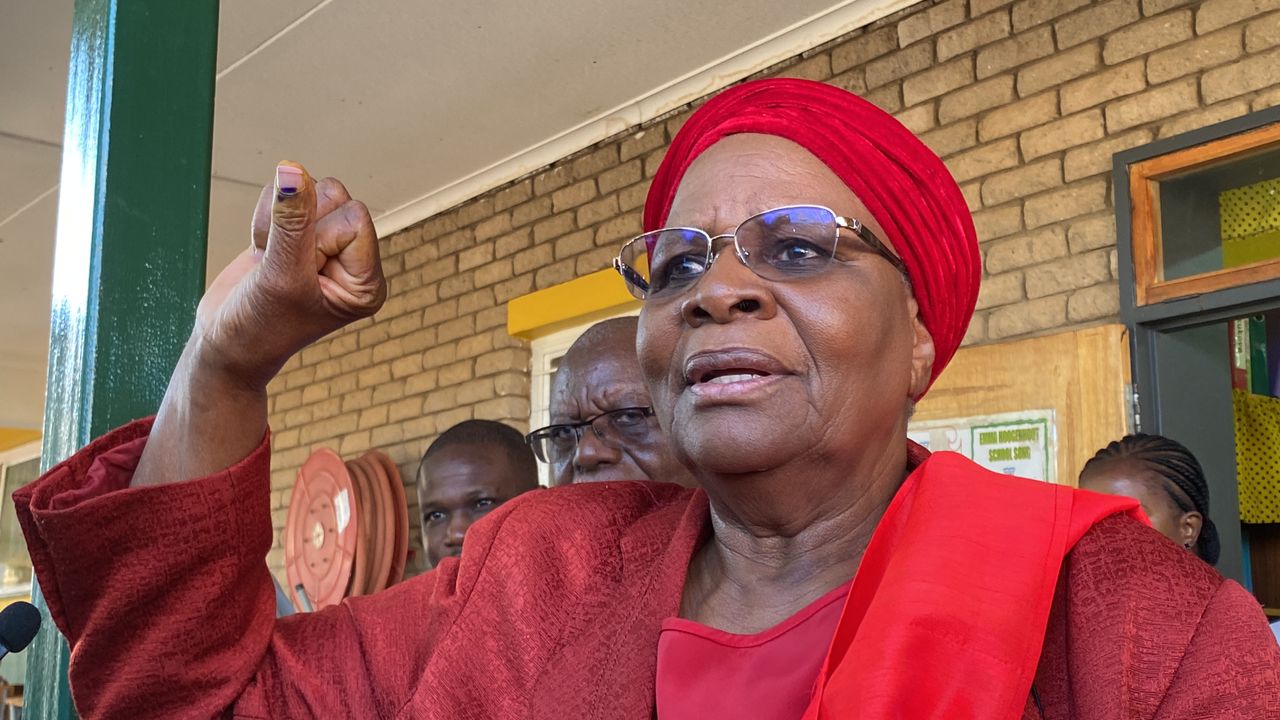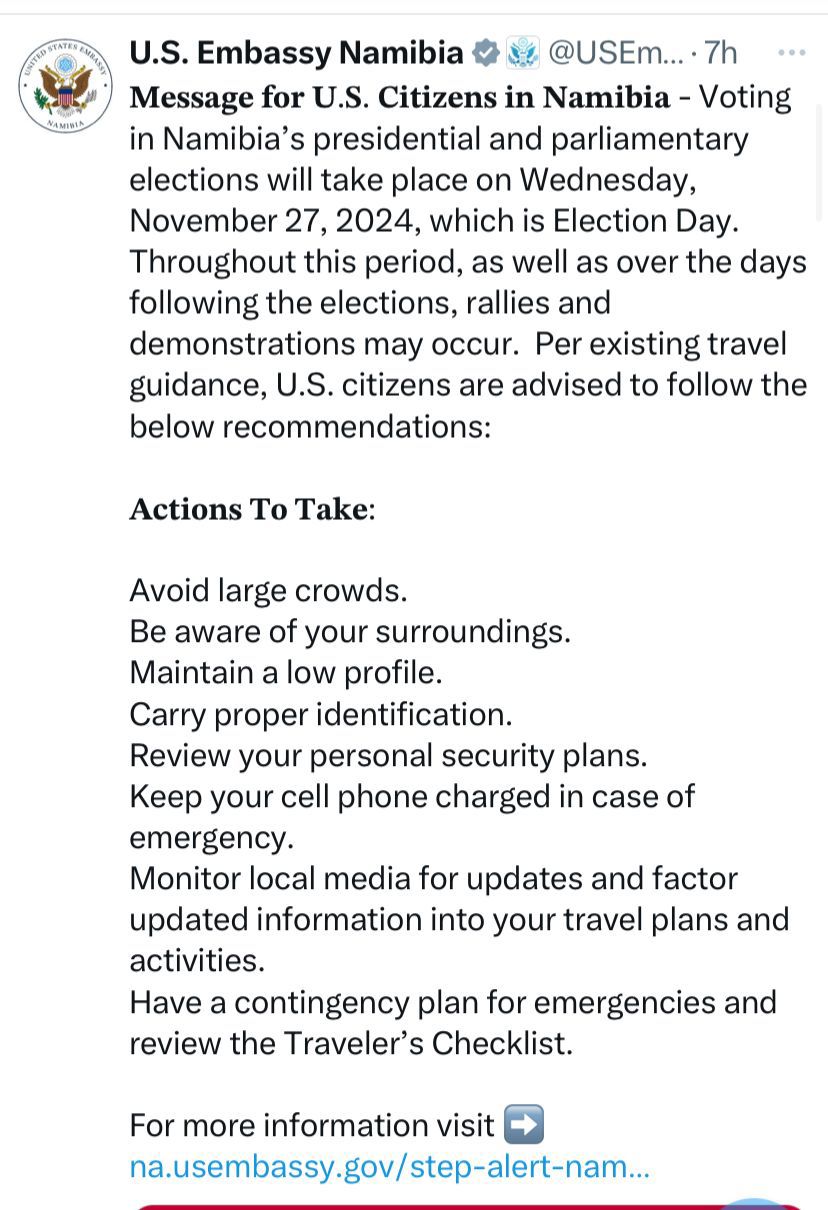Here in Lesotho it is known as white gold – the water which plays such an important role in the country’s economy.
The engineering marvel at the centre of this is incongruous in the country’s highlands – sited among the shepherds in traditional Basotho blankets and mud huts that make up this rural area.
The Katse dam is a seriously impressive piece of design. Standing at 185m (600 feet) tall, it is Africa’s second largest curved dam.
Completed in 1996, it forms part of the Lesotho Highlands Water Project, which was the result of a deal signed between the governments of Lesotho and apartheid South Africa a decade earlier.
The country might be entirely surrounded by its much larger neighbour, but it has something parts of South Africa lack – a regular supply of water.
Due to its unique geography – Lesotho is the only country in the world that lies entirely above 1,000m – the country receives a relatively high amount of precipitation.
That is where Katse comes in.
Water is funnelled out of the dam, entering a series of tunnels, that eventually takes it into the Vaal river system in South Africa. It is Africa’s biggest water transfer scheme.
The government says Lesotho receives $200m (£154m) a year from South Africa for the water – more than double what the country used to get after the agreement was renegotiated earlier this year.
However, despite being water rich, Lesotho remains economically poor. And nowhere is that more apparent than in Ha Ramokoatsi village.
Despite being around just 1km from the dam, its 200 residents still have to rely on a small natural spring, tucked away inside a small cave on the hillside, for their supply of water.
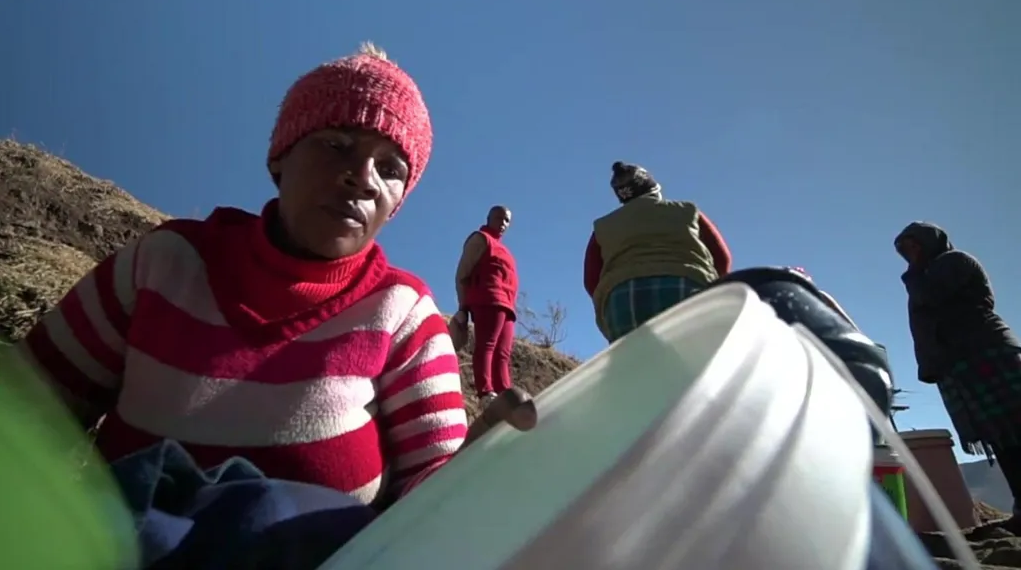
At 10:00 on the day the BBC visits, there is a steady queue of women, holding empty paint buckets to carry the water home.
Some have been here since 03:00. In the queue we meet 50-year-old Manteboheleng Mosiyoa, who arrived five hours ago.
“The water situation here is terrible,” she says, visibly angry.
“Sometimes when it rains, a dead dog can be washed into the spring. We have to just take it out as we need the water, even if it is contaminated.”
She adds that consuming the water has had health consequences, and shows us an itchy rash on her wrist, which health workers say is a result of drinking dirty water.
“We regularly get sick, even small children. They drink this water and they have upset and painful stomachs.
“Sometimes when you come to the water you see little worms, but we still drink the water, because there is no way we can survive without it.”
As we speak the spring runs dry, meaning Ms Mosiyoa is left to scoop out the remaining water from a litter-filled, stagnant pool.
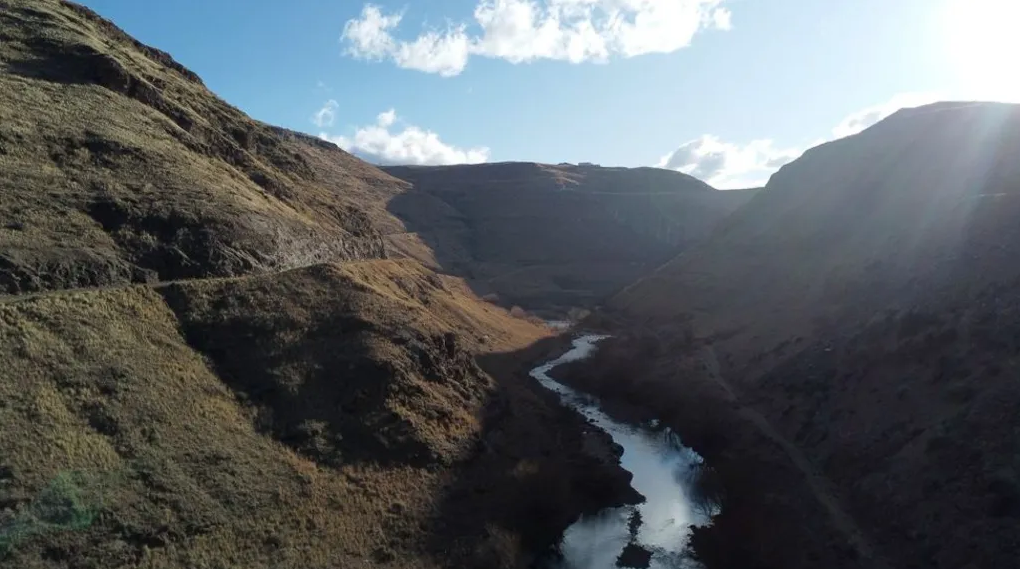
Village officials say that despite a series of promises from politicians – dating back to 2020 – that running water would be installed, they have heard nothing.
Village chief Hlojeng Khethisa shows me written minutes in a notebook from meetings held with the previous government.
“My message to this government is that they should come here and see how we live. We can’t have this beautiful dam built around our village and yet we’re still living in poverty.”
That is not a story that you will hear on the tours of the dam, offered by the Lesotho Highlands Development Authority, which runs the project.
Our guide is eager to tell tourists about the fact that Lesotho generates half its electricity through hydro-power, and the roads that have been built thanks to money earned from the dam.
Katse was the first dam, with a second opening in 2003. A third is set to start operating in 2028, with plans for a total of five dams.

Despite the growth, Minister of Natural Resources Mohlomi Moleko admits that the project has not always been in the interests of the communities that live around it.
“We now have to – as Basotho – refocus. Our main focus going forward is to give water to the Basotho, and second the water transfer.
“We are now looking at the provision of water for locals by 2030. That’s what we’re going to be looking at.” He adds that “he would bet his life” that the roll-out will be completed by then.
The demand for Lesotho’s natural resources is only likely to grow.
Much of Lesotho’s water is diverted to Gauteng province, South Africa’s economic heartland, and home to its biggest city, Johannesburg.
It is the largest city in the world not built on a water source, and the city of gold is getting thirstier.
Taps in the city increasingly run dry due to a combination of crumbling infrastructure, a growing population and reservoirs emptying out due to climate change.
“Lesotho’s water is very important, as it basically drives part of South Africa’s GDP,” says Professor Anja du Plessis, a water management expert at the University of South Africa.
“Water demand however is not sustainable. Consumers use a lot of water, over 200 litres a day, but 46% of water that goes through the system does not reach the consumer, due to neglected infrastructure. It’s a man-made issue at this point in time.”
A deal has also recently been signed to take Lesotho’s water more than 700km, into Botswana.
None of the economic benefits of this will be much comfort to the residents of Ha Ramokoatsi.
Despite being able to see the Katse dam from the window of her house, Ms Mosiyoa says it has bought nothing positive to her life.
“This dam hasn’t done anything for us. We know nothing of the money Lesotho gets. Nothing has been done for us. We’re really struggling.”
Stay informed with The Namibian – your source for credible journalism. Get in-depth reporting and opinions for
only N$85 a month. Invest in journalism, invest in democracy –
Subscribe Now!


